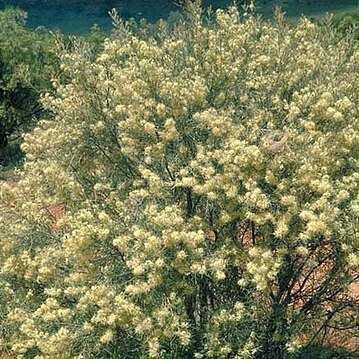A medium to large shrub. It grows 2-5 m high and spreads 2-3 m wide. It can be spreading or upright. The leaves are narrow. They are 4-8 cm long and 2 mm wide. They are very sharp. The flowers are white and in showy clusters. The fruit are hard woody follicles. They are 2.5-3 cm long by 1.5 cm wide. They are broad and swollen in the lower half. The seed has a light brown wing. The seed is black.


